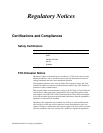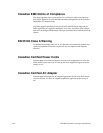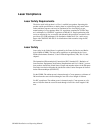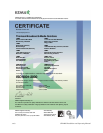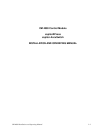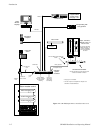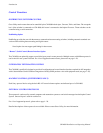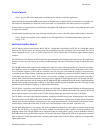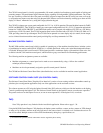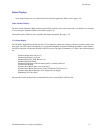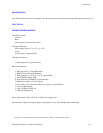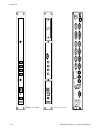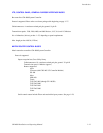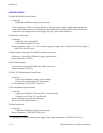Introduction
1−5CM 4000 Installation and Operating Manual
Control panels
Note 1: only the JEP−100 control panel is available for use with the AccuSwitch application.
Jupiter message−per−keystroke (MPK) control panels are designed to be as simple, flexible, and inexpensive as possible. Sys-
tem software is maintained in a central file server from where it is downloaded to the control processors as required.
Control panels are connected to the controlled device through the CM 4000 System Controller, using either the multi−point
or single−point method.
For information beyond that given in the following summary, please refer to the control panel model number in the Index.
Note 2: Certain control panels are not available for use with JupiterXPress. For additional information, please refer
to page 1−29.
SWITCHER CONTROL PANELS
The CP 300 one−rack unit series includes the CP 300 24 x 1 Single Bus Control Panel; the CP 310 24 x 8 Eight Bus Control
Panel; the CP 320 full−matrix, 16−category panel with a dedicated protect key; and the CP 330 Control Panel. The CP 330
can be configured as a 48 x 1, 24 x 2, or 48 x 6 panel. The CP 328 is similar to the CP 320 but has eight−character display
windows.
The CP 2002 uses 16 LCD back−lit buttons that allow source mnemonics to be displayed in the button frame. The panel allows
operators to select up to 256 sources by scrolling to additional pages. The colors of the buttons change to indicate the active
source.
The CP 3000 switcher control panel can be configured for single−bus control (allowing selection of a source for one destina-
tion), multi−bus control, or full matrix control (selection of a source for any destination). The CP 3000 panel is used to select
one of 20 source categories (VTR, CAM, etc.) and then, using a 10−key pad, a unit within the category. Crosspoint status*
is provided by the display window. Additional push buttons provide breakaway (control of individual switcher levels such
as left audio, time code, etc), chop,* lock,* protect,* and override* switching. A password can be assigned to the panel if
desired. The CP 3000 can also be operated in connection with an adjacent CP 3010 expansion panel. For example, for multi−
bus control, the desired source can be selected on the CP 3000; the CP 3010 would then display the names of eight destinations,
beneath which are eight corresponding TAKE keys; one of these would be pressed to complete the switch. The page of eight
destinations can be scrolled to display up to 160 possible destinations.
The CP 3020 is a single bus control panel that can select one of 20 inputs. The push buttons illuminate to indicate status and
can be fitted with user−supplied transparent labels. Dedicated chop and lock buttons are included. Up to four CP 3021 Push
button Expansion panels can be added to the CP 3020, allowing button−per−input selection of up to 100 inputs.
The CP 3800 is a universal, eight−character mnemonic, switcher and machine control panel. When operated in the “multiple
destination mode,” the CP 3800 can be used to control from 1 to 80 destinations, with the names of eight of those destinations
(and the status for each) on display simultaneously. In the “single destination mode,” one destination is selected for control,
and the display window shows the status for each level of that destination (video, left audio, right audio, etc.).
The CP 3808 control panel is a 16−category, full−matrix, multiple level breakaway panel capable of locking and protecting
outputs. The CP 3830 is a 12−category, full−matrix, multiple−level breakaway panel, capable of locking, protecting, and
chopping outputs. Dual CP 3830 panels can be configured so that one of the panels is always used for destination selection;
dual output mode is also possible with two panels side by side. Both the CP 3808 and CP 3830 can be operated in connection
with an adjacent CP 3809 Expansion Panel. All three panels feature eight−character display capability and relegendable,
lighted push buttons.



